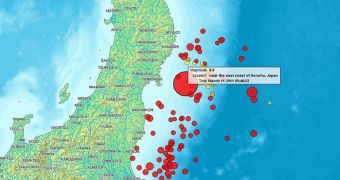The massive earthquake and tidal waves that struck Japan back in March were bound to make their effect felt on the IT industry, and it looks like PC and phones are turning into exhibit A.
The thing about large-scale disasters is that they have a tendency of crippling the entire infrastructure of a nation and even affect the whole world.
The loss of life, as always, takes priority, but it is definitely not the only consequence of earthquakes, volcano eruptions, tsunamis, hurricanes etc.
Japan was struck by a very serious natural disaster on March 11, 2011, or disasters, since the earthquake, while primarily responsible for the destruction, also sent tsunamis ravaging.
In addition to tens of thousands of deaths, this led to factories being shut down and/or damaged, this disrupting the supply chain for various components.
This may or may not have something to do with how the ASUS Eee Pad Transformer seems to be unavailable even though it should be selling.
Either way, iSuppli found that the markets for mobile phones and personal computers are beginning to feel the effects.
This is in line with the prediction that May would mark the start of component supply constraints and would set the stage for the real issues, which will escalate in June.
Megahertz and kilohertz crystals are used in oscillators, which end up as part of watches/clocks, radios, phones, notebooks etc.
Their lead time (time between an order is placed and the product delivery) has increased by half, from the 6 weeks in March to 12 weeks. Fortunately, not all new is bad.
“On a positive note, status reports from one leading manufacturer of quartz crystals and oscillators that are sold in cylindrical, plastic, metal and ceramic packages show that production has restarted at that manufacturer’s disruptions to the local power grid continue to delay the resumption of normal operations,“ says iSuppli.

 14 DAY TRIAL //
14 DAY TRIAL //